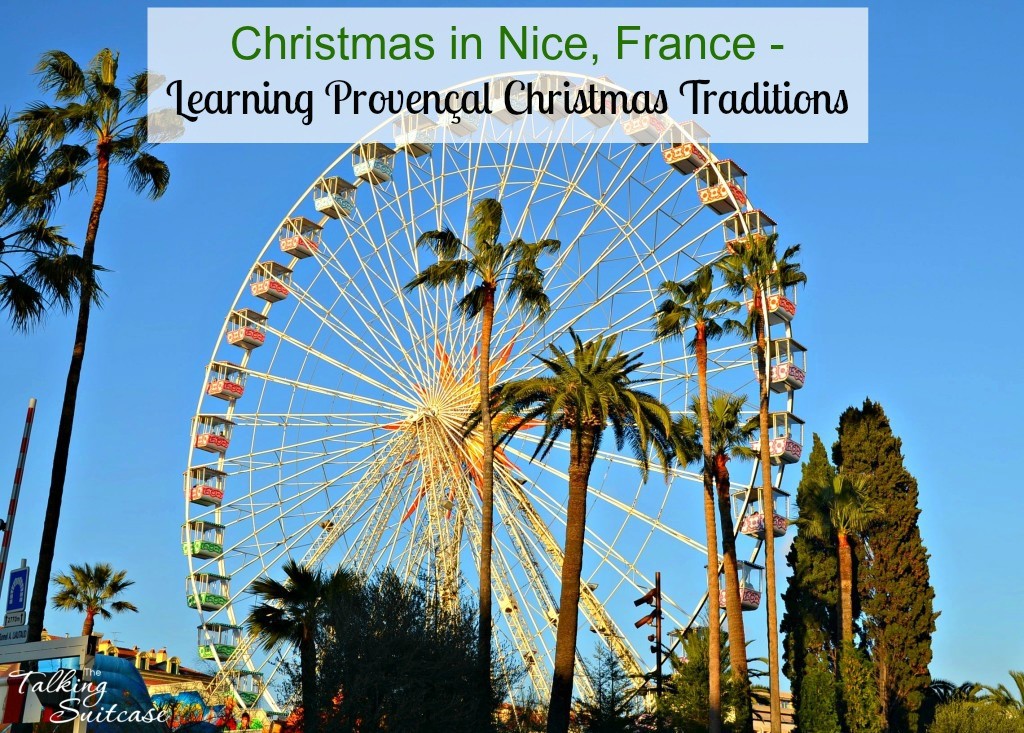
Missing France……
Celebrating Christmas in Nice is similar to celebrating in the United States. The sprit of the season is all about family and traditions.
How We Celebrated Christmas in Nice
- Christmas Tree in from of Hôtel de Ville
- Lights in the streets of Old Town
- Christmas Trees for Sale in Nice
- Holiday decorations at the grocery store
Although it may not have met our abnormally sophisticated expectations, there was some level of holiday decorating throughout Old Town Nice and some decorations on apartment balconies. The most popular outdoor decoration was a climbing Santa which seemed to be present on 4 out of every 5 apartments. Old Town and the main squares were decked out with a fair amount of lights and other decorations. But we did miss being in the US and seeing all the houses lit up as if in a competition. It was our little tradition to drive around trying to find the gaudiest light displays or to take walks in the evening to see which of our neighbors put out the tackiest Santa.
We purchased a few window clings from Carrefour and Lucy made Christmas crafts to decorate our apartment. Since we didn’t want to spend a lot of money on a tree, Derrick and Lucy made one for us. The apartment had an empty flower pot which they wrapped in Christmas paper and placed water bottles in to keep it weighed down. Next they put a bamboo stick in the middle and used strips of garland to make a “tree”. We purchased a string of lights for 5€ and Lucy made the star and ornaments. We ended up with a 10€ Christmas Tree that she couldn’t have been prouder of.
Just before the holiday, some friends from the US came to visit. We all left a few days before Christmas and traveled to Italy to spend some time there. We packed plenty of action into just a short period with a visit to Florence, a day exploring the countryside of Tuscany and a third day in Venice. On Christmas Eve, my wornout family and I took the train from Florence back to Nice. It was a LONG day of travel. After being delayed over an hour, we finally made it home around 6pm that night.
We had been invited over to the home of French friends to celebrate Christmas Eve, but we were just too exhausted. Looking back, I’m disappointed we didn’t push through and attend. We missed out on a first hand experience with the 13 desserts as well as other Provençal Christmas Traditions.
- K at Christmas with Nice stickers
- Kids on Christmas morning
- Homemade Christmas tree in progress
The kids woke up Christmas morning to discover that Père Noël had, in fact, found us in France. The kids each received their traditional 3 gifts from Santa and a few from Mom and Dad. Luckily Santa remembered that we need to travel light, so the gifts were all useful and not just for fun. K got a new scooter which works out well as all his friends either ride a scooter, skateboard or bike after school.
Derrick’s Mom had shipped some gifts to the kids too, so they ended up with quite a haul. Other family members gave cash, so the kids could purchase souvenirs and other goodies during our travels.
While we were in Florence, Derrick snuck off to purchase my gift. He walked all around the city and finally bought a Golden Florin necklace from the famous Ponte Vecchio bridge. The florin was once the dominant trade coin of Western Europe. Since I love Florence, Derrick knew a necklace with a replica of a florin would be the perfect gift.
Spending Christmas away from our extended family wasn’t easy, but we enjoyed experiencing some of the Provençal Christmas Traditions of our new home.
Provençal Christmas Traditions
- Wheat seeds for Fête de la Sainte Barbe
- It will be a prosperous year!
Fête de la Sainte Barbe – The Christmas season or Calendale starts on December 4th, with Fête de la Sainte Barbe or Feast of Saint Barbara. Wheat and lentil seeds are placed in three small dishes, representing the Holy Trinity, to grow until Christmas. On Christmas Eve, the plantings are used as table decoration with ribbon wrapped around the tall green spouts. The wheat and lentil symbolise prosperity and a good harvest for the new year. The higher your plants grow, the more prosperous your year will be.
Seeds can be found near the cash registers of many stores starting late November and into early December. We placed our seeds on small plates on top of a cut paper towel. You need to keep the seeds moist, so watering daily is a must. The kids enjoyed tending to their plants and taking part in a new tradition. We’re looking forward to a very prosperous New Year!
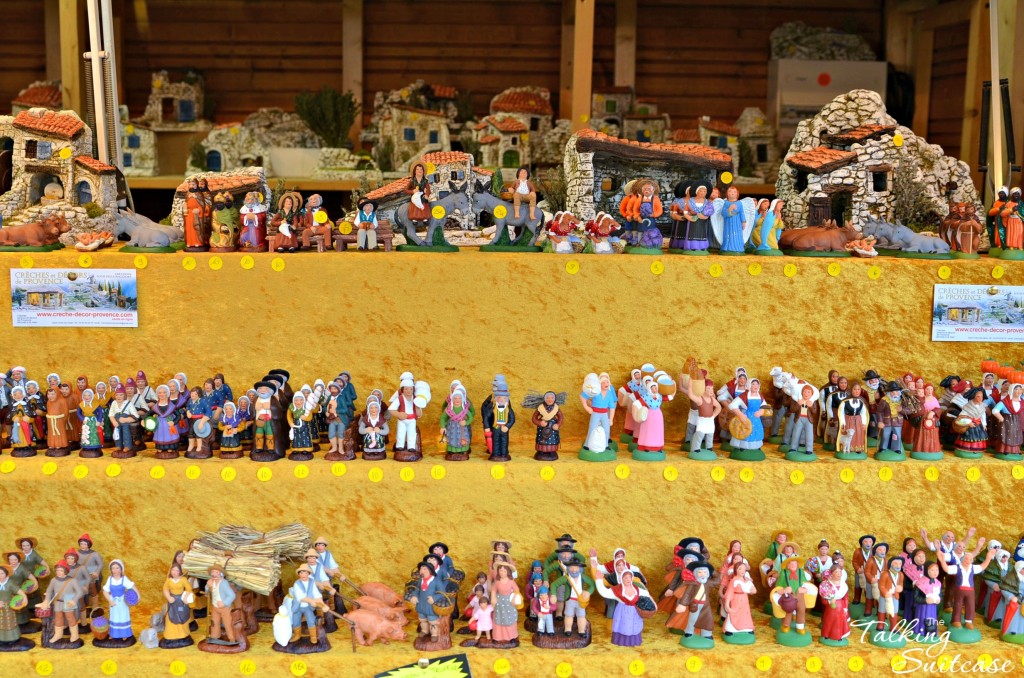
Santons – Traditional figurines called Santons or little saints are small hand-painted, terracotta nativity scene figurines which are produced in the Provence region of southeastern France. The scenes are put up in homes and storefronts throughout Southern France.
The santons represent characters from old-fashioned Provençal village life such as the the chestnut seller, scissors grinder and fishwife and are used in a traditional Provençal crèche (nativity scene). Interestingly, the figurines were first created during the French Revolution when churches were forced to close and large nativity scenes were prohibited.
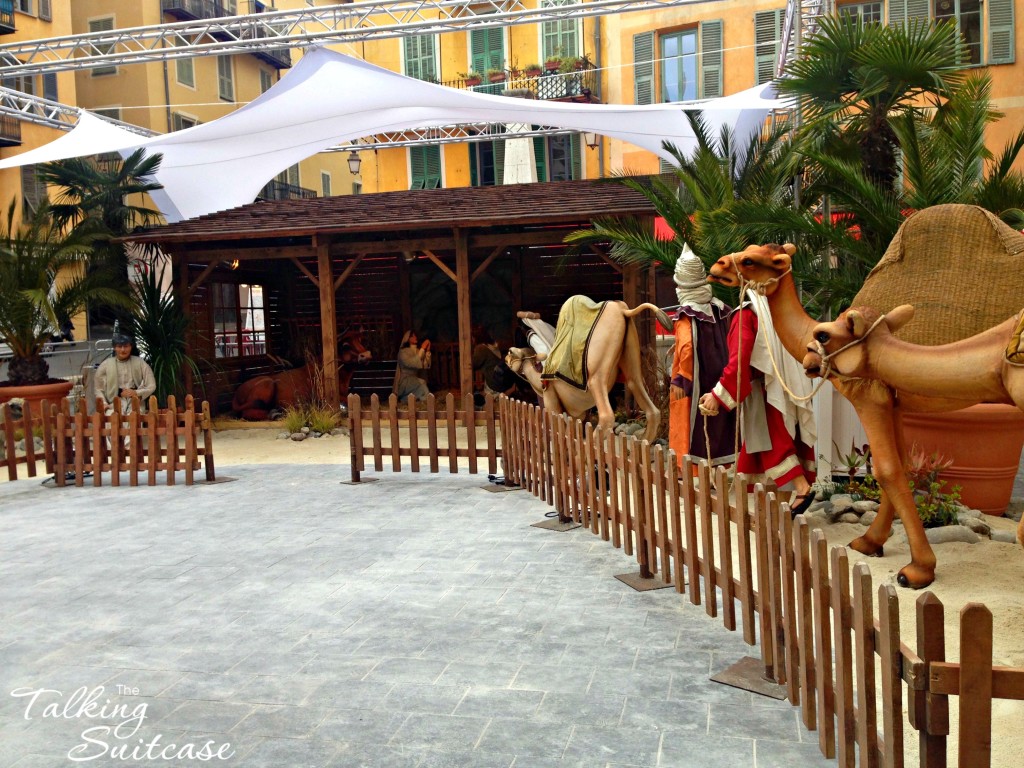
The animals move!
Crèche – In Place Rossetti, you’ll find a large crèche meaning Christmas crib. Americans would think of it as a Nativity Scene. Homes will also have a crèche and would be set up with the santons.
Père Noël – Father Christmas or Santa is called Père Noël. You might also hear Papa Noël from younger kids which translates to Daddy Christmas.
Sapin de Noël – Christmas trees, Sapin de Noël, are important here in France. Children work hard to decorate their trees for Père Noël. Traditionally the tree was decorated with fruit and ribbons, but most trees I saw were decorated like to those in the US, minus the Hallmark ornaments. Living in Old Town, it was interesting to see tiny little trees everywhere. It looked like the tops were cut off of larger trees. It makes sense to have smaller trees in the city center since getting a tree up some of the narrow hallways of the apartment buildings could prove difficult, particularly in the older buildings.
Le gros souper – The big meal is served on Christmas Eve before the Midnight Mass. Traditionally, the table is laid with three white tablecloths layered over each other with three white candles, symbolising the Holy Trinity. The sprouted lentils and wheat which have been tied with ribbon decorate the table.
During Mass you might even see live sheep being brought to the altar!
Les treize dessèrts: Starting around 1920, the thirteen desserts became a popular tradition in France, representing Jesus and the twelve apostles at the last supper. There are always thirteen desserts consisting of fresh fruit, dried fruit, nuts and sweets, but the exact items served can vary.
Dates, dried figs, almonds, walnuts, oranges, pears and apples are popular as well as candied fruits, Yule Log and two kinds of nougat.
A traditional pompe à l’huile, a brioche or sweet cake made with olive oil and flavored with either orange blossom water or lemon peel. The desserts will also be served with sweet wine.
New Year celebrations – I really had a hard time finding family friendly New Year celebrations. There were plenty of parties going on and lots of people out for dinner. We ended up having dinner on the beach while the kids ran around and played soccer.
- Gâteau des Rois
- Fève in the Gâteau des Rois
- The figure in our Cake of the Kings
Gâteau des Rois – The Cake of Kings is in celebration of the Epiphany which is now a fixed the date of the 6th of January. The solstice celebration dubs the “king for a day” and is a time to remember the 3 kings who presented gifts to baby Jesus in Bethlehem. The tradition is supposed to start on the Epiphany but lasts all throughout January.
Traditionally, the youngest in the family gets under the table while someone cuts the cake into which is baked a favor or “fève”. The hostess then points to a piece of cake asking “who is this piece for?” The youngest will call out a name until all the pieces of cake are distributed. This is so there is no cheating, as the child is unable to see which piece the fève is in.
Whoever gets the favor or “baked in piece” is the King (or Queen). That person then chooses his or her queen or king. A paper crown is sold with the cake to place on the head of the king.
The fève (once beans) are tiny nativity figures or santons. In more recent years you can find Disney characters and other types of figures. It’s a big deal here to collect the figures! You can see in the last picture that our fève looks like a wise man.
Pictured is a King cake (Gâteau des Rois) that is a round brioche topped with candied fruit. It is popular in the South of France. Derrick was the king, but Lucy quickly declared herself as queen and stole the crown.
There is a 2nd type of King Cake (Galette des Rois) that looks more like a pastry pie and is filled with almond cream that we will try later this month. This type is more popular in Northern France.
Back in the 16th century, there was a fight between the boulangeries and the patisseries over who could make the cakes. The cake shops or patisseries won. This is why there are 2 different types of “King Cakes” today.
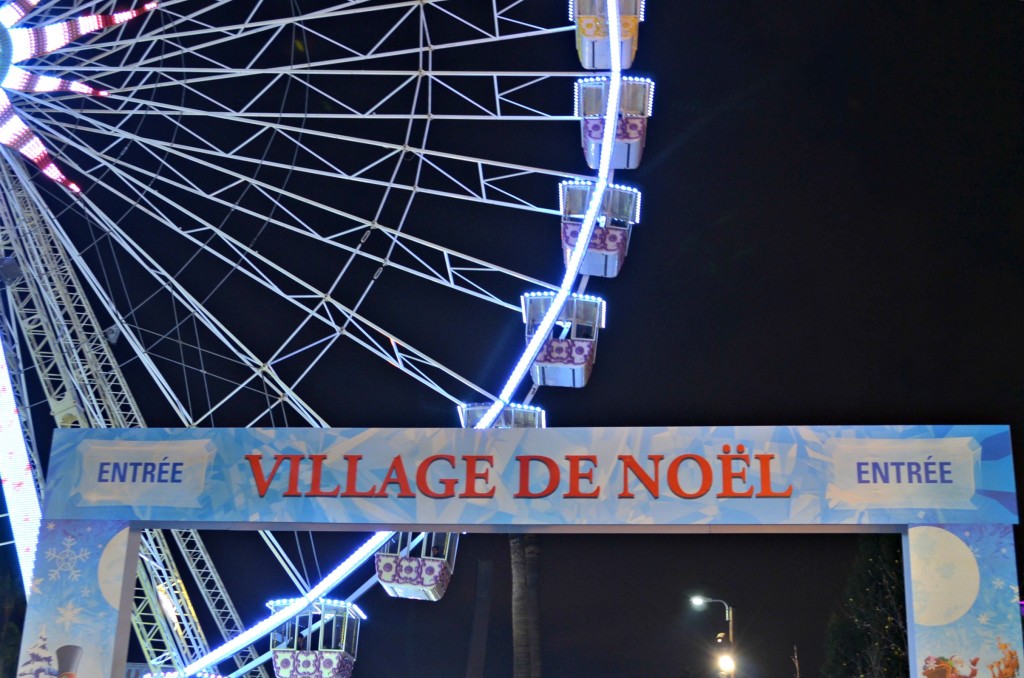
Village de Noël entrance at night
Throughout December we took advange of the Christmas Market in Nice, France. It’s a must see attraction if you’re visiting Nice around the holiday’s.
Christmas words to know in French:
Noël – Christmas
Joyeux Noël – Happy Christmas
Bonnes Fêtes – Good Holiday’s
La Messe de Minuit – The Midnight Mass
Père Noël – Father Christmas
Le Petit Jésus – The Baby Jesus
Les Anges – The Angels
Un Sapin de Noël – A Christmas Tree
Une Dinde – A turkey
Un Cadeaux – a present
Une Guirlande – A garland
Un Renne – A reindeer
Une Cloche – A bell
Une Bûche – A log
Une Cheminée – A chimney
Une Botte – A boot (US would be a stocking)
Un Traineau – A sleigh
Une Boule – A ball (like a Christmas ornament)
Les Rois Mages – The Three Kings or Wise Men
Bonne Année – Happy New Year
Christmas is a wonderful, celebratory time in the south of France. While it may not be beach weather in December, there is still plenty to see in Nice during the holiday season. These Provençal traditions are not to be missed!
Bonnes Fêtes!
Don’t miss our article on the Nice Village de Noël or you may be interested in our adventures celebrating Thanksgiving in France.
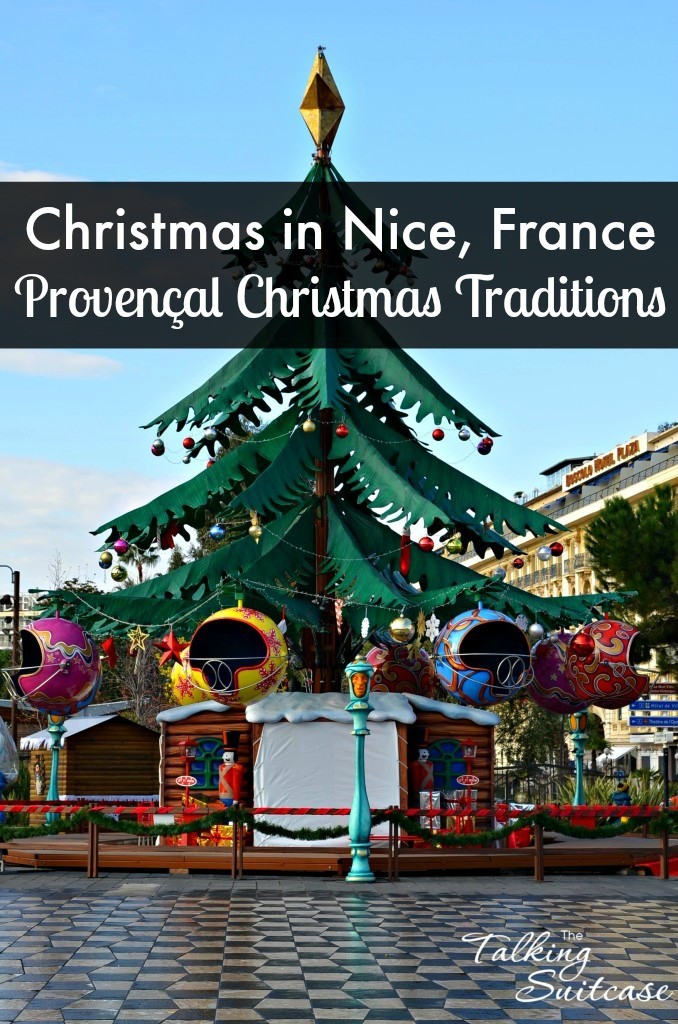
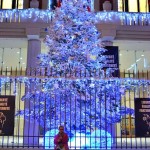
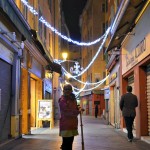
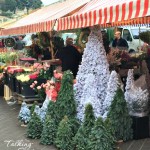
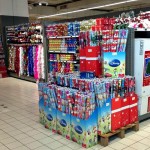
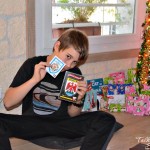
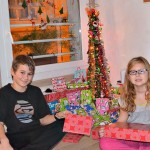
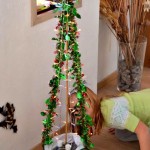
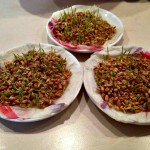
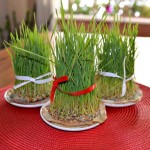
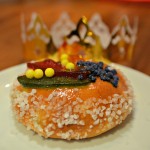
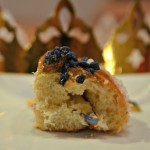
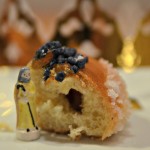

[…] you’re visiting in January, make sure to try the Gâteau des Rois. Read more about these Provençal Christmas Traditions if you’re visiting during the holiday […]